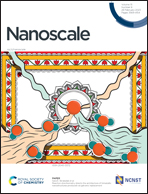Introducing oxygen vacancies in a bi-metal oxide nanosphere for promoting electrocatalytic nitrogen reduction†
Abstract
The sluggish breakage of the N–N triple bond, as well as the existence of a competing hydrogen evolution reaction (HER), restricts the nitrogen reduction reaction process. Modification of the catalyst surface to boost N2 adsorption and activation is essential for nitrogen fixation. Herein, we introduced surface oxygen vacancies in bimetal oxide NiMnO3 by pyrolysis at 450 °C (450-NiMnO3) to achieve remarkable NRR activity. The NiMnO3 3D nanosphere with a rough surface could increase catalytically active metal sites and introduce oxygen vacancies that are able to enhance N2 adsorption and further improve the reaction rate. Benefiting from the introduced oxygen vacancies in NiMnO3, 450-NiMnO3 showed excellent performance for nitrogen reduction to ammonia with a high NH3 yield of 31.44 μg h−1 mgcat−1 (at −0.3 V vs. RHE) and a splendid FE of 14.5% (at −0.1 V vs. RHE) in 0.1 M KOH. 450-NiMnO3 also shows high long-term electrochemical stability with excellent selectivity for NH3 formation. 15N isotope labeling experiments further verify that the source of produced ammonia is derived from 450-NiMnO3. The present study opens new avenues for the rational construction of efficient electrocatalysts for the synthesis of ammonia from nitrogen.



 Please wait while we load your content...
Please wait while we load your content...